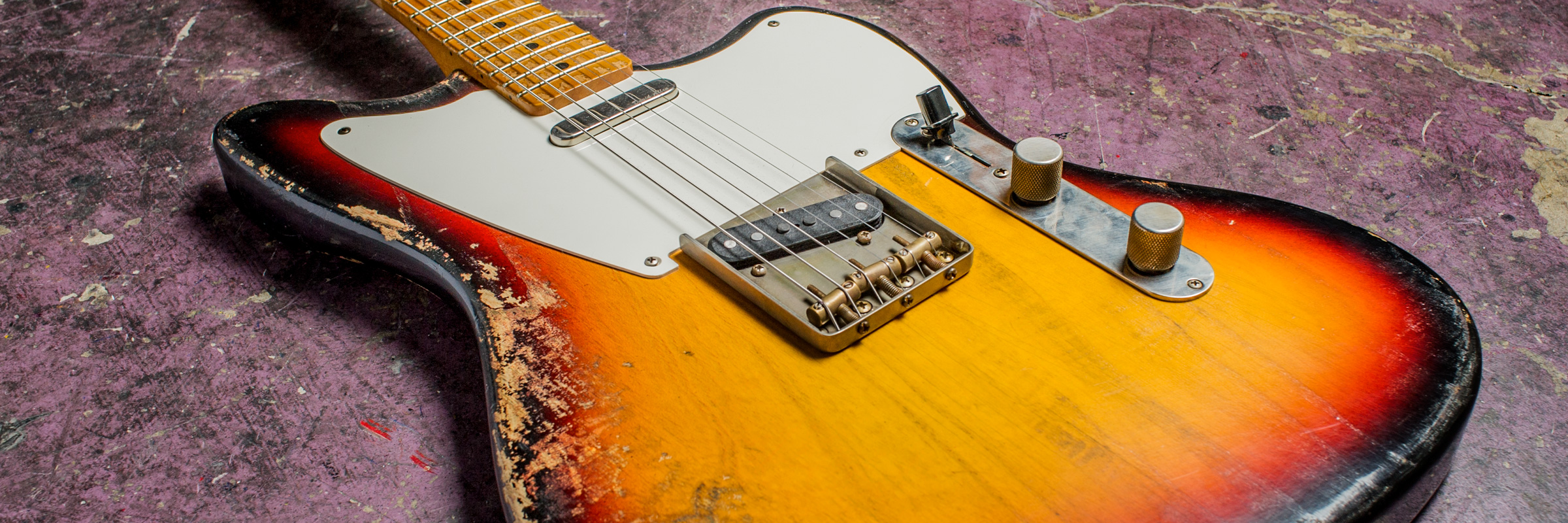The problem for modern players is that the original EP-3 machines are expensive, temperamental, and larger than a VCR. They require a ton of maintenance, and it’s increasingly difficult to find the correct tape cartridges. So even if you can find and afford a perfectly running EP-3, a single gig can take quite a toll on the machine as well as wear out your precious tape.
But that doesn’t mean you can’t have the EP-3’s sonic mojo for yourself. We created the Echoplex line of pedals to give you that sound in a convenient, pedalboard-friendly form that you can take on the road. Last year, we came out with the Echoplex Preamp. This year, we’re releasing the second component of the EP-3’s signature sound in the form of the Echoplex Delay. Like the Echoplex Preamp, it’s the size of a Phase 90, and it delivers the EP-3’s legendary tones with a simple control interface and a hi-fi all-analog dry path.

If you’re not an advanced tonechaser, you may never have heard of the Echoplex EP-3. But you’ve definitely heard what it can do. Eddie Van Halen is known to have used them religiously in the early days, even taking his units on tour. Jimmy Page, who originally used the Echoplex EP-2 unit, switched over to the EP-3 as soon as it came out, and it remains an essential part of his rig. Brian May had his EP-3s modified to extend delay time. Eric Johnson has used them for years, even putting them directly on his pedalboard on occasion. And that’s just to name a few.
To get at what made the EP-3 so appealing to these and other guitar greats, we had to focus on the EP-3 in two separate elements: the preamp and the delay effect.

THE PREAMP
There’s nothing transparent about the EP-3. If your signal goes through it, your tone changes—even if you don’t use the delay effect. Turned out some guitar players loved that tonal seasoning. It’s all thanks to EP-3’s preamp.
The Echoplex EP-1 and EP-2 machines sounded rich and warm thanks to the tubes in their preamp sections, but their repeats tended toward muddiness. The EP-3, on the other had, uses a solid-state preamp—providing much needed clarity—with a Field Effect Transistor (FET) supplying depth and warmth in place of tubes.
The Echoplex Preamp sweetens up your sound in the same way. Its circuitry follows the exact same signal path as the EP-3, including the FET circuit, so when you kick it on, you’re adding the same secret ingredient to your tonal recipe that was favored by the aforementioned guitar greats. The Preamp’s single Gain control sets the pedal’s volume and can boost your signal up to +11dB. At higher settings, you’ll hear slight asymmetrical clipping for some very smooth and organic grit.

THE DELAY
The charm of the EP-3’s delay effect is that each repetition is unique. When you play a note, it’s recorded onto the tape and played back. The first repeat is clear, but because of the slight pitch changes inherent to tape machines that are imparted onto the signal, it’s not identical. That slightly imperfect first repeat is itself recorded for the second repeat, which now includes new imperfections in addition to the old ones.
We created the Echoplex Delay pedal to provide that same charming “copy of a copy” magic and more. Rather than just recreate the sound of a pristine EP-3, we wanted this pedal to give players the full range of tones available from an EP-3 machine throughout its lifetime.
To start, we gathered up seven different EP-3 units. These machines are 40 or so years old by now, so quality and condition are all over the place, and we wanted to be sure we had a good selection of units to evaluate. We chose five of them to be serviced and calibrated, and then we picked the best sounding one—the one with the least wow and flutter—to be the default sound.
We used the other machines to dial in the range of sounds for the Age control, which allows you to “age” the delay signal from clean and clear to dark and distorted. Tape echo machines have a lot of moving parts, and over the years, they lose functionality and break down. This can add gain, distortion, and wow and flutter while darkening up the tone—characteristics that many guitar players have come to love about their maturing EP-3s. We simulated those changes so you can use the Age control to make your repeats sound like a brand new EP-3 or one that’s been sitting in your garage for a few decades. Taking the Age control fully clockwise can take you into freakout territory, beyond the aging effects found in any of the units we worked with.
With the Delay control, you can set the time between repeats to anywhere from 40ms to 750ms, but the Echoplex Delay can be connected to an MXR Tap Tempo Switch to set delay time up to 4 seconds.

COMBINING THE ECHOPLEX PREAMP AND ECHOPLEX DELAY
Combining the Echoplex Preamp and the Echoplex Delay pedals allows you to condition your guitar tone as an “always on” effect with the preamp and kick on the delay effect as you need it.
All you need to do is put the Echoplex Preamp in front of the Echoplex Delay in your signal chain. While the Echoplex Delay’s effect signal is already conditioned with the tonality of the Preamp, putting the Preamp in front of the Delay ensures that the “dry” signal going through the Delay is also sweetened up by the Preamp.
It’s like having the full EP-3 on your pedalboard, but instead of having to dial the delay function up or down with a knob, you can step in and out of it with a footswitch.





























